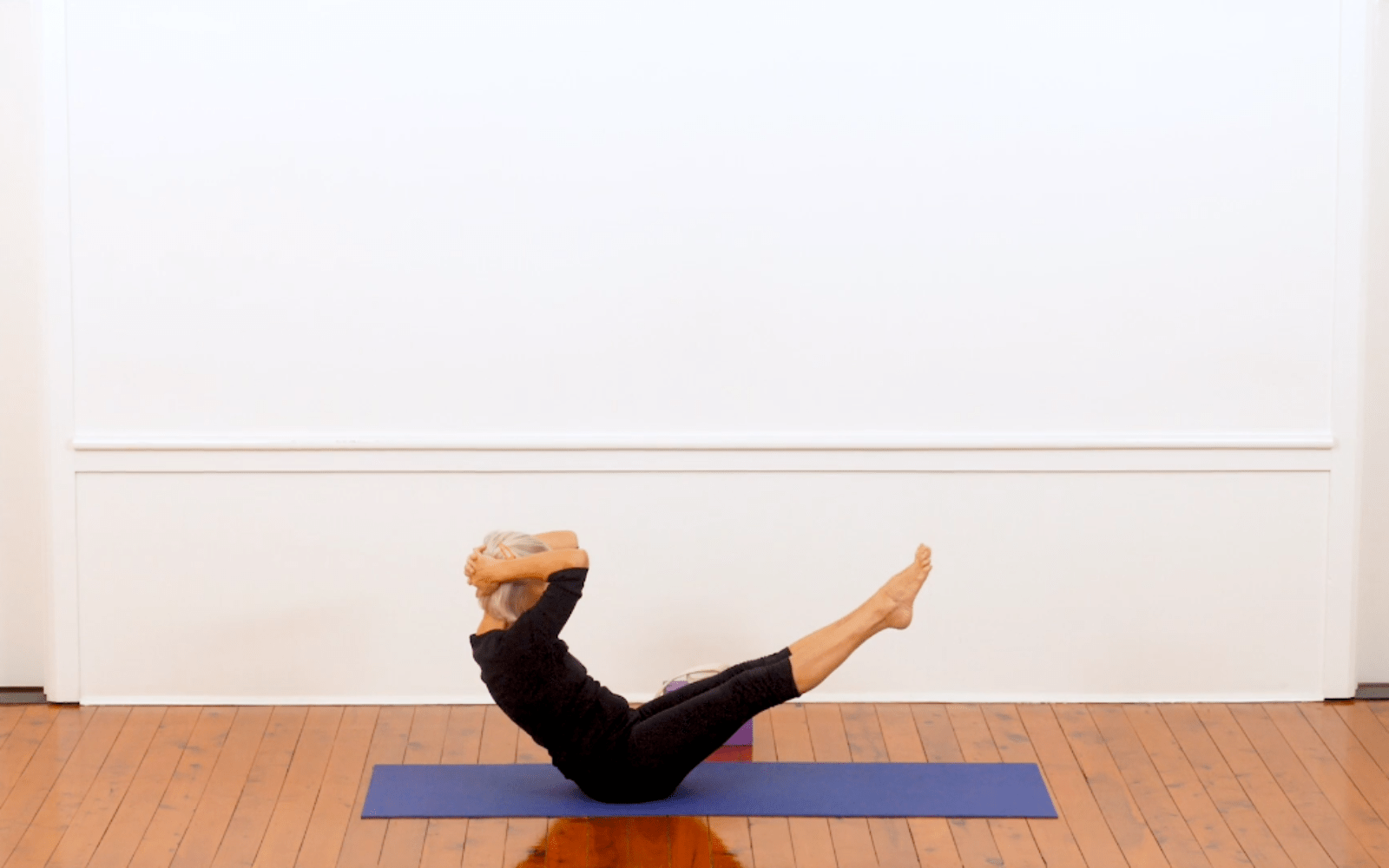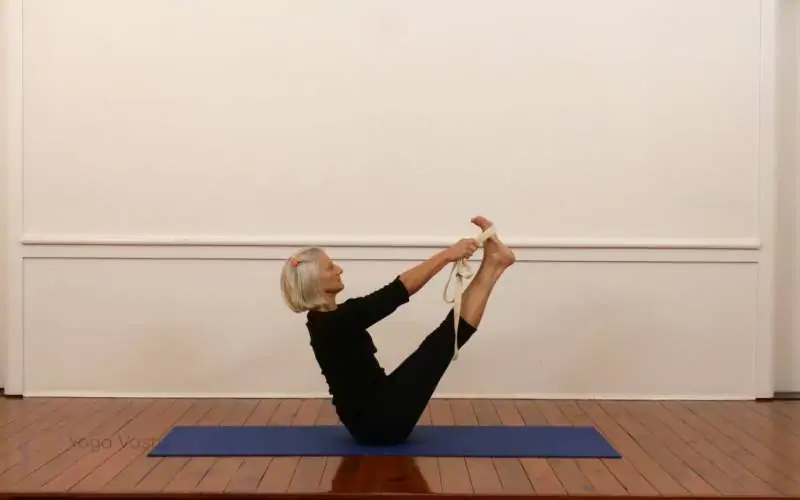How to perform Half Boat Pose
Start in Dandasana. Interlock your fingers behind your head. Then, recline your trunk and extend your legs upward simultaneously. Maintain balance solely on your buttocks. The crown of the head should be in line with your toes.
What is Ardha Navasana?
Ardha Navasana is one of the Boat Poses and is often paired with Paripurna Navasana. The chief difference between the two poses is the position of the feet relative to the head. In Ardha Navasana, the feet are in line with the head and the abdominal muscles are pulled further away from the thighs. However, in both variations the key is to maintain balance solely on the buttocks, preventing the spine or thighs from dropping down onto the floor.
Make sure to hold your abs in and breathe evenly while holding this pose. This will ensure that all the right muscle groups are strengthened and will prevent you from overstraining. Your breath should be your guide. If you notice you are holding it in excessively and have trouble reconnecting to it through due focus, lower yourself down and relax. Hugging your knees into your chest in a supine position can help relieve the tension in your abdominal muscles.
When to use Ardha Navasana?
Ardha Navasana is usually paired with the other Boat Pose, Paripurna Navasana. Both these poses provide great benefits to the organs in your abdominal area and can be extremely helpful in combatting various digestive issues, such as bloating or constipation.
Challenging at first, this pose can be assumed quite effortlessly if practiced on a regular basis. Initially, hold this pose for just a couple of breaths (or to capacity). Eventually, you will be able to build up to a point when you can maintain it for a minute or two. Being able to hold in either of the Boat Poses for prolonged periods of time indicates a strong core and a high level of stamina, both essential for performing more advanced asanas. As you get more comfortable in this pose, you will be able to turn it into a more dynamic form of abdominal exercise, by combining it with lateral twists.
Performing this pose on a regular basis will considerably improve the health of your lower back, which will go a long way in improving your overall posture and making your day-to-day movements more effortless.


